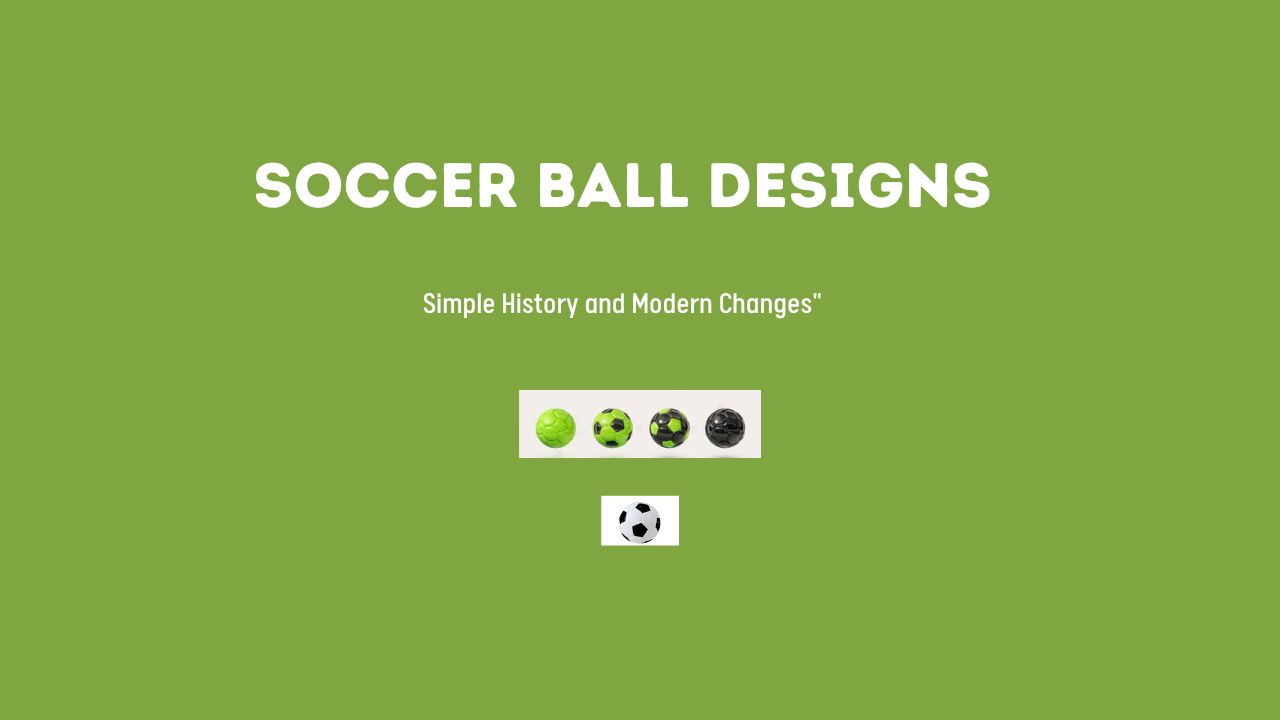
Introduction
The soccer ball, an amazing picture of the game famous as football in many county of the planet, is necessary to the game played by millions all over the planet. Its arrangement, materials, and improvement have progressed after an opportunity to further develop execution, heftiness, and player experience. This total associate explores the various pieces of the soccer ball, from its arrangement of encounters and plan to its different sorts and usages.
History of the Soccer Ball
The history of the soccer ball goes back many centuries. People made early soccer balls from things like animal bladders, leather, and even human skulls. These balls were not very good for playing because they were often different sizes and shapes.
In the 1800s, people started making better soccer balls. They used rubber bladders, which helped the balls keep their shape and bounce better. Charles Goodyear invented vulcanized rubber in the 1850s, making the balls more durable and reliable.
The biggest change came in the 1950s when designers created the 32-panel soccer ball. This design, which has 20 hexagons and 12 pentagons, made the ball rounder and improved how it flew through the air. Adidas made this design famous with the Telstar ball, used in the 1970 World Cup.
Evolution of Plan
Early Plans: Early soccer balls were regularly delivered utilizing animal bladders covered with cowhide, which made them whimsical in flight and bounce. These balls moved in size and shape, making the game testing and clashing. :
Modern Developments: Designers revolutionized the high-level soccer ball in the 1950s by introducing the 32-panel configuration. Adidas made this design famous with the Telstar, which they used in the 1970 FIFA World Cup. This arrangement, including 20 hexagonal and 12 pentagonal loads up, gave a nearby brilliant circle, working on the ball’s flight and control
Materials and Improvement
Inner Bladder: Manufacturers regularly create the internal bladder, which holds the air, using latex or butyl. Plastic bladders offer better flexibility and a milder energy anyway require more progressive extension.
Lining: Manufacturers add various layers of covering between the outer cover and the bladder to improve the ball’s development and strength. They frequently use polyester or cotton for these linings, ensuring the ball holds its shape and provides a consistent bounce.
Sizes and Standards
Official Sizes: Soccer balls come in different sizes, with size 5 being the standard for master and adult matches. Size 5 balls have a limit of 27-28 inches and weigh 14-16 ounces. Various sizes integrate size 4 for youth players, size 3 for young people, and size 1 or little balls for skill improvement and particular purposes.
Regulation Standards: Soccer balls used in obvious challenges ought to fulfill express rules set by directing bodies like FIFA. These rules cover the ball’s circuit, weight, return quickly, and water maintenance, ensuring consistency and sensibility in the game
Types of Soccer Balls
Match Balls: Manufacturers design match balls for professional play, meeting the highest standards of quality and performance. They use high-grade materials to ensure excellent flight, control, and durability. These balls undergo rigorous testing to earn FIFA’s “FIFA Quality Pro” certification.
Training Balls: Manufacturers design training balls for practice sessions, making them more durable than match balls. These balls often have a thicker outer cover and are built to withstand the challenges of regular use on various surfaces. Training balls are typically more affordable but may not offer the same level of performance as match balls.
Turf and Indoor Balls: Manufacturers create specialized balls for different playing surfaces. Turf balls, designed for artificial grass, have a slightly different construction to handle the unique demands of such surfaces. Indoor balls are usually smaller, heavier, and have less bounce to suit the indoor playing environment.
Advanced Progressions
Aerodynamics: Late degrees of progress in soccer ball advancement have focused in on additional creating smoothed out highlights. Engineers and makers use air stream testing and virtual encounters to restrict air impediment and overhaul trustworthiness during flight. The Adidas Bazooka, used in the 2014 World Cup, featured six thermally built up loads up expected to additionally foster smoothed out elements and give a seriously obvious flight.
Smart Soccer Balls: Creative types of progress have moreover provoked the improvement of splendid soccer balls, which incorporate sensors to give persistent data on estimations like speed, contort, and course. These balls are used in planning to help players and tutors with analyzing execution and further foster capacities.
The Meaning of Upkeep
Inflation: Real extension is crucial for a soccer ball’s show. Under-expanded balls can impact control and solidness, while over-extended balls could end up being unnecessarily hard and off-kilter to play with. The proposed pressure is regularly shown prepared and should be checked regularly with a strain measure.
Cleaning and Storing: To keep a soccer ball’s condition, it should be cleaned after use, especially at whatever point played on messy or untidy surfaces. Use a spongy texture and delicate chemical to wipethe ball, avoiding unforgiving manufactured intensifies that can hurt the material. Store the ball in a cool, dry spot away from direct sunlight to hold the material back from ruining.
The Impact of the Soccer Ball
On the Game: The soccer ball isn’t just a piece of equipment; it shapes the genuine thought of the game. Improvements in ball plan and advancement have affected playing styles, systems, and, shockingly, the norms of the game. A particularly arranged ball ensures fair play and overhauls the overall understanding for players and onlookers.
Social Significance: Soccer balls hold basic social and delegate worth. They address the fortitude and energy of the game, transcending geographic, political, and social cutoff points. Famous balls, like the Adidas Telstar and the Jabulani ,have become pictures of significant junction in soccer history.
Conclusion
The soccer ball is a vital part of the game, eccentrically associated with its arrangement of encounters, culture, and improvement. From its humble beginning stages to the general plans of today, the soccer ball continues to progress, overhauling the game for players and fans something very similar. Sorting out the intricacies of its arrangement, advancement, and upkeep can expand one’s appreciation for this essential piece of sporting equipment. Whether used in a World Cup last or a casual region game, the soccer ball stays at the center of soccer, driving the excitement and enthusiasm that portray the game.
